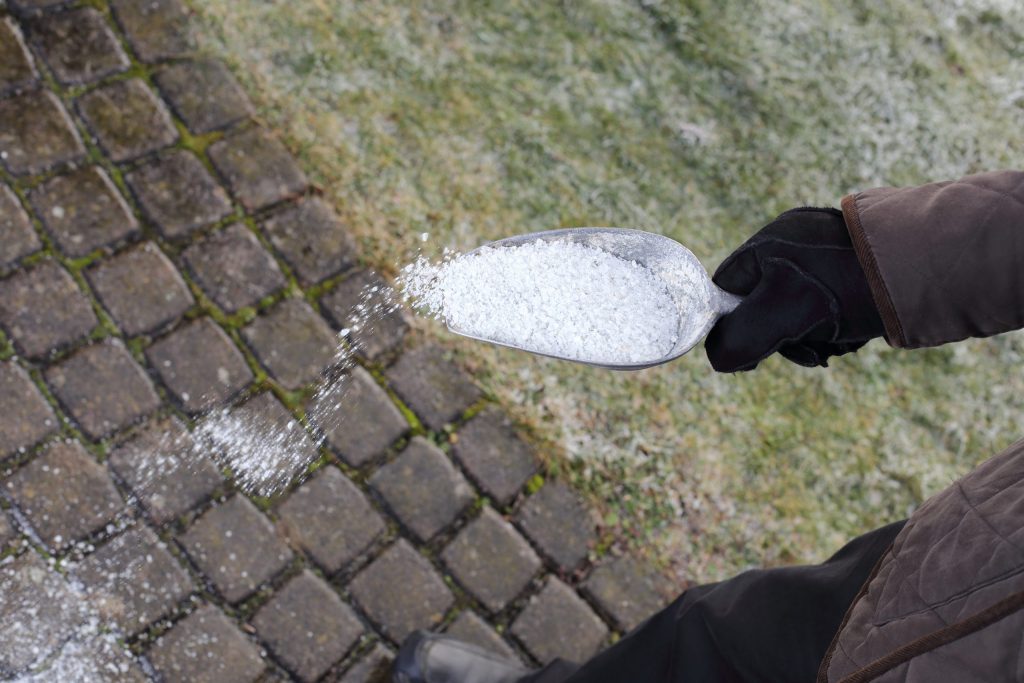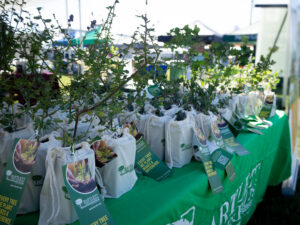When winter is in full force, salt deicers remove ice on walkways, driveways and roads for safety. It’s important to know, however, that these salt deicing products can damage trees and shrubs.
Sodium chloride (rock salt) is one of the most common deicing products. Runoff of melted ice and snow may cause residual material to splash onto foliage or seep directly into the soil, causing wilting and other injuries to plants.

Salt Damage Impacts Many Trees
Evergreen species are most susceptible to this type of damage. Airborne salt kicked up by traffic settles on the foliage and dries out the plant. However, salt can also damage deciduous species as well. Salt is absorbed into the soil, resulting in root damage to nearly any type of tree or shrub that lives in that soil.
What Does Salt Damage Look Like?
Wilting and dryness of leaves and other foliage is the most common symptom, though it is usually apparent only after large masses of salt have accumulated. Significant drooping, especially at the top of a tree, often indicates soil damage. This is because salt inhibits water absorption by the roots. (As such, the symptoms can be similar to those for trees experiencing drought.) Salt spray from vehicle traffic usually occurs on the lower part of the tree, facing the street. Damaged trees also tend to have thinner leaves and bloom later in the spring.
Other symptoms include: stunted growth of foliage; browning of foliage; thinning of branch tips; premature fall coloration and defoliation; and dead branches.
Protecting Plants from Salt Damage
Damage is hard to prevent. Winter weather complicates efforts to help trees, and there is no way to wash salt off. When selecting trees and shrubs to plant near driveways and roads, consider salt-tolerant species like birch, oak or juniper.
Monitoring plants regularly ensures overall health. Be sure to keep trees well-watered and use gypsum (calcium sulfate) to help counteract salt in the root system. A Certified Arborist can also help keep trees healthy year-round so they are less susceptible to damage.
There are several other practices to help reduce salt damage: use barriers of burlap or wood; lay down mulch to prevent seepage; and water thoroughly during dry periods. These preventative measures can decrease the chances of trees experiencing heavy damage.



